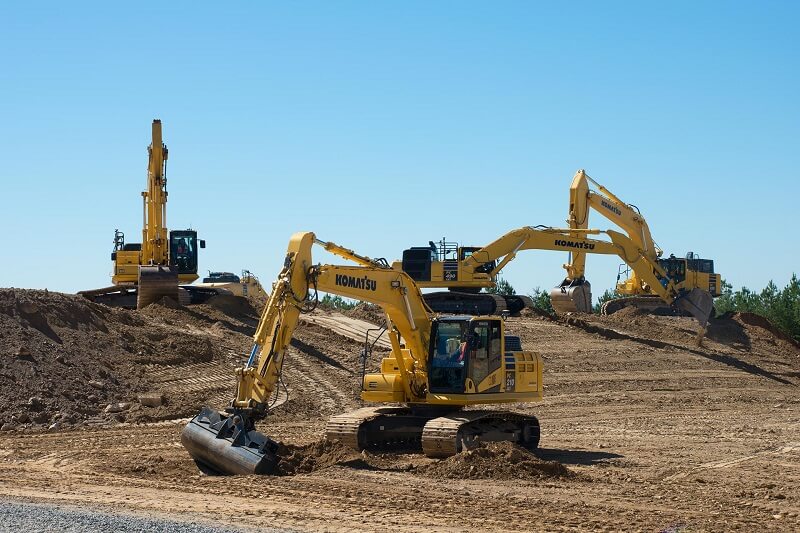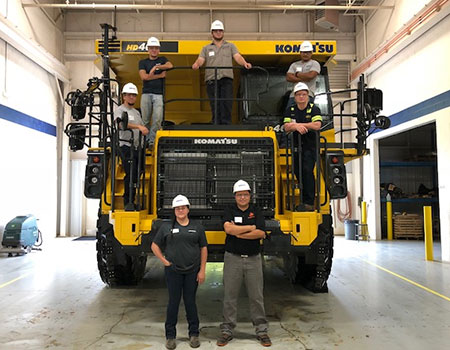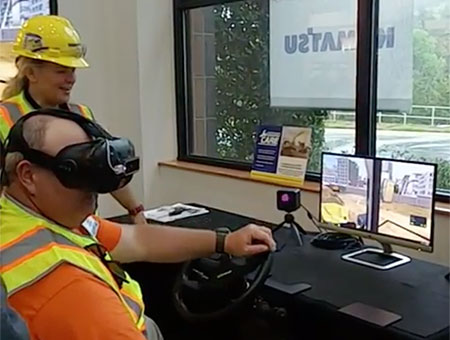2 min read
Komatsu named a Best of CES winner
- Press release,Construction,Company,Surface mining
5 min read

With the national unemployment rate hovering under 4%, every industry is feeling the pinch of a tight labor market. In the construction and mining industry, it’s even tougher because many heavy equipment technicians are heading toward retirement. This fact is compounded by the large number of technicians who left the industry during the Great Recession.
Earlier this year, Equipment World reported that the Associated Equipment Distributors (AED) estimates the heavy equipment technician shortage is costing its members $2.4 billion in revenue each year, which at the dealership level, averages out to $6 million per dealer, annually, according to Steve Johnson with the AED Foundation. That means that our industry is hemorrhaging money while customer satisfaction and machine uptime are reduced. We need to find solutions.
Part of the problem is the misperception that technician work is dirty and/or dangerous work. It’s simply not true these days, but those past stereotypes persist.
Technicians today are highly trained, technologically savvy, and have an entirely different skill set. Thanks to the technological advancements in the design of construction and mining equipment, some of the most important tools used by today’s heavy equipment technicians are onboard monitoring systems that provide data for troubleshooting.
Our industry needs skilled talent, and to succeed we have to recruit earlier in the job discernment process and retain highly skilled technicians by providing them multiple career paths. That’s why as an OEM, Komatsu is committed to focusing on training and career development for technicians.
In conjunction with our distributors, we’ve created programs that focus on training technicians and currently have programs in various parts of the country. Two of those programs, one in Oklahoma and one in North Dakota, are partnerships with existing university programs.
 For more than 20 years we have partnered with Oklahoma State University Institute of Technology (OSUIT) for the Komatsu Advanced Career Training Program to train students to become heavy equipment technicians.
For more than 20 years we have partnered with Oklahoma State University Institute of Technology (OSUIT) for the Komatsu Advanced Career Training Program to train students to become heavy equipment technicians.
 Virtual reality is a very beneficial training tool that could help us reach another demographic of future heavy equipment technicians: gamers.
Virtual reality is a very beneficial training tool that could help us reach another demographic of future heavy equipment technicians: gamers.
The oldest of these programs is at Oklahoma State University Institute of Technology (OSUIT). Launched over 20 years ago, OSUIT’s Komatsu Advanced Career Training Program trains students to diagnose, service, and maintain our equipment using Komatsu recommended procedures, tools and service information. Those who complete the OSUIT program graduate with an Associate in Applied Science in Diesel & Heavy Equipment.
Students who enter OSUIT’s two-year program spend half their time on campus for technical instruction on current Komatsu equipment learning the latest diagnostic and service procedures. The rest of their time is spent in real-world training through paid internships at our Komatsu distributors. This is an important piece: interns get paid for the work they are training to do. They are more vested in their career because they feel that their potential future employer (the Komatsu distributor) is truly investing in them.
More recently, in 2015, we developed a partnership with North Dakota State College of Science (NDSCS). There we offer a two-year diesel technology program focused on Komatsu construction equipment and related products. The NDSCS program combines state-of-the-art training on campus, with internships with sponsoring Komatsu distributors.
At the NDSCS program, students receive hands-on training in one of the largest diesel technician facilities in the U.S., combining classroom instruction, hands-on laboratory instruction and cooperative educational work experience at participating Komatsu distributors. The program provides students with extensive service experience on Komatsu equipment.
We are piloting another program in the Southwest, Northwest and central Midwest regions of the country that supports veterans becoming technicians. Similar to our programs with existing schools, this pilot program also partners with our distributors. We work with business partners to recruit former members of the military and link them to open dealership positions which will train them as Komatsu heavy equipment technicians.
Depending on the region, our vets to techs program takes a couple of different approaches. Some distributors have their own apprenticeship program, while others help veterans enroll in a two-year tech school and create individualized programs that have similarities to the programs we have with OSUIT and NDSCS, where the technicians-in-training combine coursework with internships at our Komatsu distributors.
Regardless of the technician training program, we support our distributors and the aspiring heavy equipment technicians. In some instances, the students are granted scholarships, while in others we help the distributors sponsor the students.
Additionally, online training with Komatsu's own learning management system is part of technician training. We also deploy virtual reality training, which is not only incredibly beneficial as a training tool, but it’s the kind of tool that could help us reach a whole other demographic of future technicians: gamers.
And while we’ve made headway, we still have a long way to go.
We have to meet the technicians of tomorrow where ever they are and help them understand the value proposition and career path we’re offering. Often our technician recruits come from rural areas, so we’re hoping to expand our reach and are studying and looking into programs that target urban areas.
We need to spread the word that when you train to become a Komatsu heavy equipment technician, you will make an excellent living performing a highly skilled job, regardless of your location and background.
Komatsu has distributors around the world, so armed with this training, our technicians have a very portable vocation that’s in high demand and allows them to live anywhere. And finally, back to the value proposition: our potential and future heavy equipment technicians need to understand that these training programs we offer are creating a more viable and rewarding career path than a 4-year degree would for many people. That’s compelling, and we have to keep spreading the word.
There are very good jobs out there that we need to fill. Let’s do this!